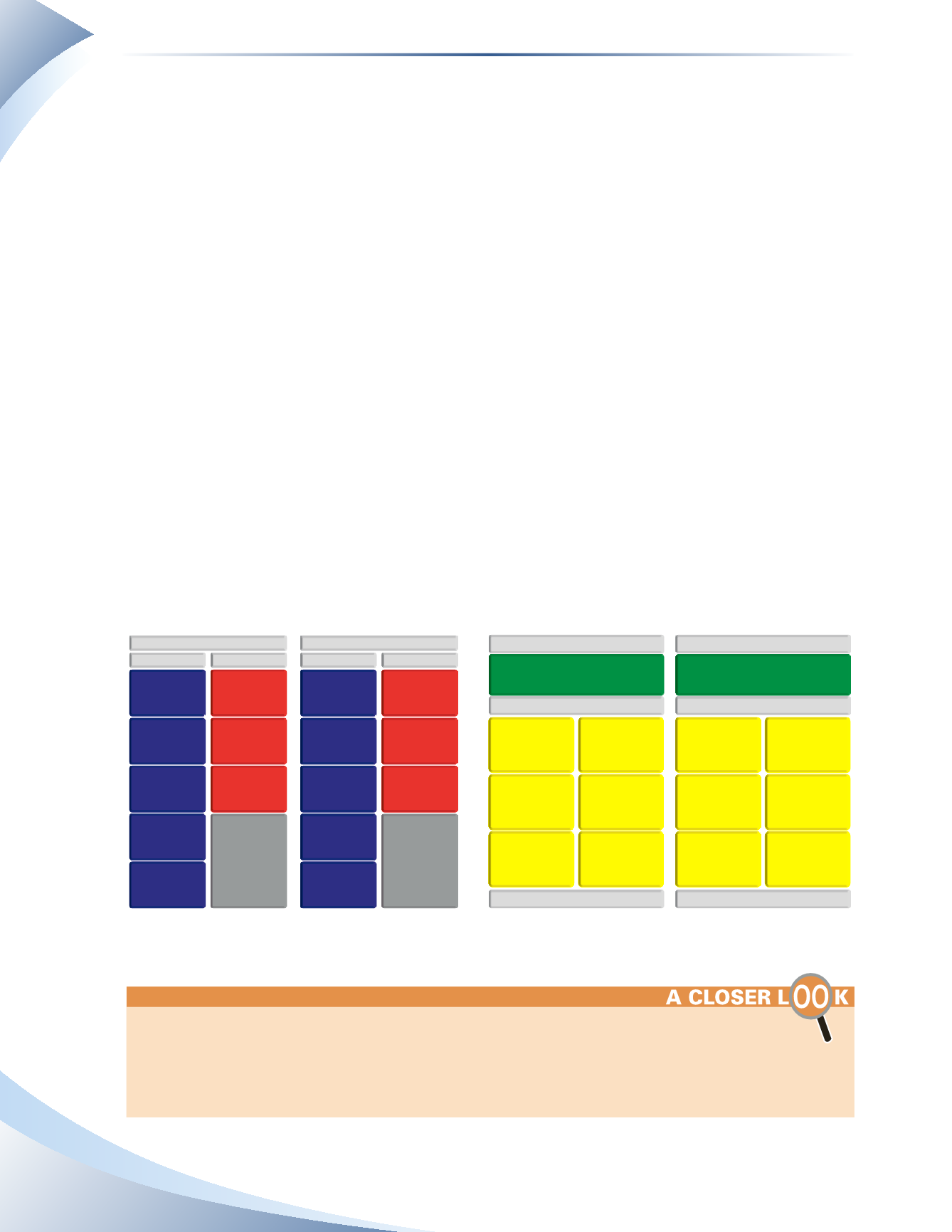
Chapter 2
Linking Personal Accounting to Business Accounting
28
7.
Unearned revenue
is an obligation the business has to provide products or service to a
customer. It is used when a customer prepays the business for services or products.
8. Just as a person may have loans or mortgages, a business may also have long-term debt such
as loans.
9. The category of net worth is referred to as
equity
. The equity may belong to the business
owner, the partners or shareholders, depending on the organization of the business. Business
organization will be discussed later.
10. Revenue will be called either service revenue or sales revenue. If a business provides services to
its customers, it will use
service revenue
. If it sells products to its customers, it will use
sales
revenue
. Some businesses will provide both and use both accounts on the income statement.
11. Although there are some similarities in the expense items on the income statement, a business
will usually have more types of expenses.We will discuss these new expenses as they appear in
the textbook.A business will typically list its expenses on the income statement in alphabetical
order.
12. Surplus (deficit) on the personal income statement is now called net income (loss).
Net
income
occurs when revenue exceeds expenses for the period and will increase equity. A
net
loss
occurs when expenses exceed revenue for the period and will decrease equity.
Figure 2.1 shows the comparison between the personal balance sheet and the business balance
sheet, and between the personal income statement and the business income statement.
The list of accounts shown here is a small sample of common accounts used. Large companies will
usually have dozens of asset and liability accounts to track these items. The income statement will
usually have multiple types of revenue accounts and hundreds of different expense accounts. As we
progress through this textbook, we will introduce more accounts as needed, indicating whether they are
asset, liability, equity, revenue or expense accounts.
PERSONAL BALANCE SHEET
BALANCE SHEET
ASSETS
CASH
PREPAID
EXPENSES
HOUSE
AUTOMOBILE
CONTENTS OF
HOME
ASSETS
CASH
ACCOUNTS
RECEIVABLE
PREPAID
EXPENSES
INVENTORY
PROPERTY, PLANT
& EQUIPMENT
LIABILITIES
UNPAID
ACCOUNTS
MORTGAGE
LOANS
NETWORTH
LIABILITIES
ACCOUNTS
PAYABLE
UNEARNED
REVENUE
BANK LOAN
EQUITY
PERSONAL
PERSONAL
BUSINESS
BUSINESS
PERSONAL INCOME STATEMENT
INCOME STATEMENT
SURPLUS (DEFICIT)
NET INCOME (LOSS)
EXPENSES
EXPENSES
REVENUE
SERVICE REVENUE
ENTERTAINMENT
DEPRECIATION
INSURANCE
INTEREST
FOOD
INSURANCE
INTEREST
RENT
MAINTENANCE
SUPPLIES
UTILITIES
UTILITIES
______________
FIGURE 2.1


